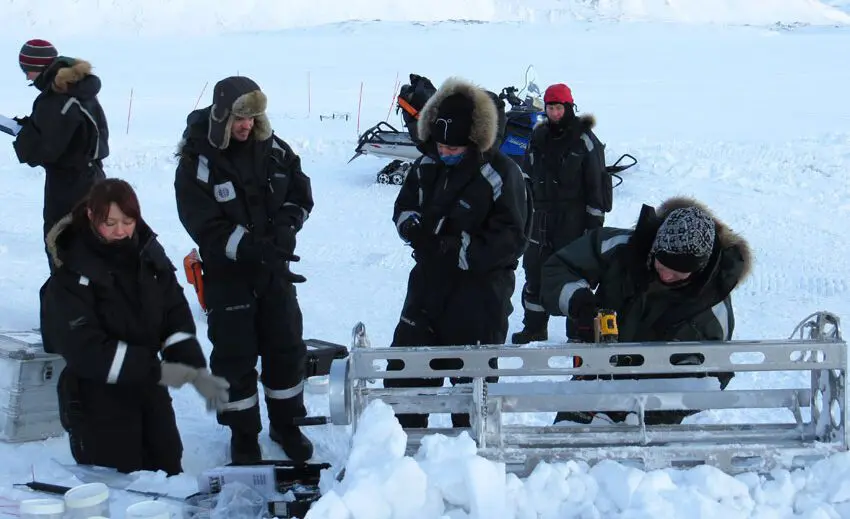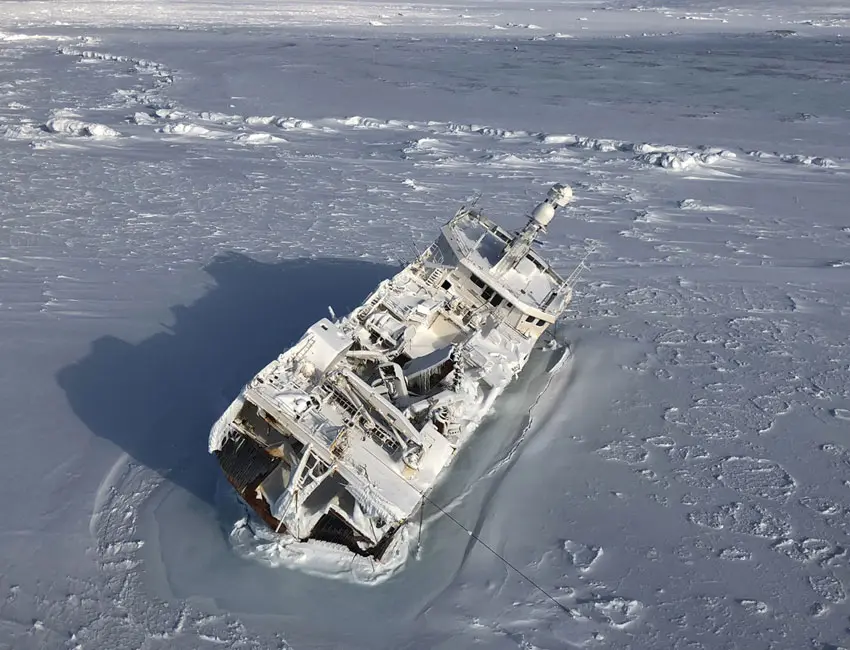The Legacy of SAMCoT

AT-307F fieldwork in Svea. Photo: Anatoly Sinitsyn/UNIS,
Top image: A major delivery of SAMCoT is the PhD and MSc students that have gotten the opportunity to attend the SAMCoT schools. These schools range from desk studies, seminars, laboratory studies to full scale field surveys. Here from fieldwork in Svea. Photo: Anatoly Sinitsyn/UNIS.
A muscle in the development of Arctic technology at UNIS has been the Centre for research-based innovation (SFI) Sustainable Arctic Marine and Coastal Technology (SAMCoT).
20 July 2020
Text: Sveinung Løset, SAMCoT Centre Director (NTNU and UNIS).
The vision of SAMCoT was, from the very beginning in 2011, to be a leading international centre for the development of robust technology needed by industry operating in the Arctic. For this purpose, SAMCoT’s goal was to perform research that would aid the industry in the environmentally friendly development of the Arctic, where unique challenges are presented by ice, frozen soil/permafrost and coastal erosion. In pursuing that goal and in achieving success, SAMCoT is making the host institution, The Norwegian University of Science and Technology (NTNU), a leading international centre in Arctic science and engineering.

The Arctic Technology (AT) department and the Logistics unit at UNIS have contributed strongly to this development and success. There are several ways of transferring knowledge to the industry. At SAMCoT, we believe that this can be best achieved through strong collaboration between academia and industry; e.g. MSc and PhD students bringing their knowledge directly into industry through employment or co-work on specific and relevant tasks.
The consortium has comprised nine research partners, 12 industry partners and two public partners. At the closing of SAMCoT, the Chair of the Scientific Advisory Committee, Professor Erland Schulson said: “The overall performance is very good. In addition to the numerous conventional publications (450 international publications), SAMCoT researchers have made significant contributions to ISO standards, specifically to the new 2nd edition of ISO 19906, Arctic Offshore Structures, and to the first edition of ISO 35104, Arctic Operations-Ice Management”.
A major delivery of SAMCoT is the PhD and MSc students that have gotten the opportunity to attend our schools. These schools range from desk studies, seminars, laboratory studies to full scale field surveys, including icebreakers. The field surveys range from Pole to Pole with unique data collection and training. From an educational perspective we know that after taking part in such field trips, the students come back with a more realistic view of the Arctic and a better understanding of their research topics. In other words, they become grown-ups.
For an SFI both impact and innovation are important. The AT department at UNIS has contributed to 45 innovation ideas that are registered in SAMCoT. From these ideas three major commercial inventions have been made:
- The spin-off company ArcISo;
- A numerical code for assessing ice-induced vibrations of structures;
- A unique Thermo-Hydro-Mechanical constitutive model of frozen soil behaviour.
ArcISo’s impact is easily visible and manifests itself in several projects that were successfully executed in 2019. An example of benefit for the local community in Longyearbyen and the Governor is the story of the trawler “Northguider”, which stranded in Hinlopenstretet on 28 December 2018. The accident happened in a very vulnerable area which is sometimes surrounded by drift ice. The Coastal Administration consulted ArcISo to assess the risk of having “Northguider” pushed by sea ice to deeper waters and to advise whether a salvage operation could wait until summer when it would be much easier, safer and more economical to operate. Here, the ArcISo simulator SAMS has been of great use. The ice conditions were thoroughly reviewed, and tens of scenarios were simulated and analysed. This has enriched the situational awareness for all stakeholders enabling decision making; something the Coastal Administration and the Governor were very grateful for.
More about SAMCoT on www.ntnu.edu/samcot.
This article was first published in the UNIS Annual Report 2019.
